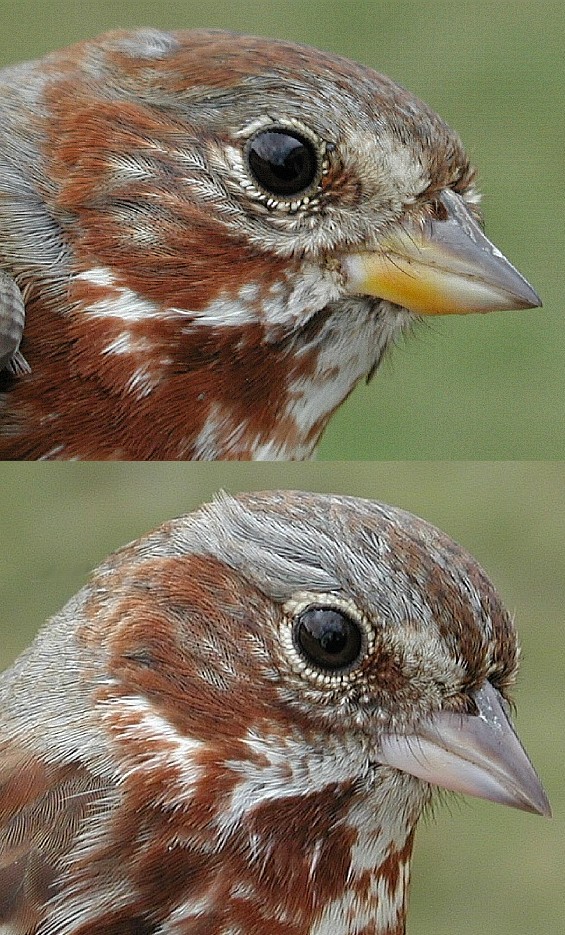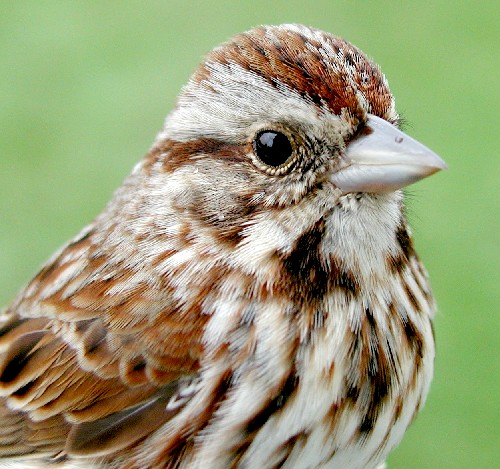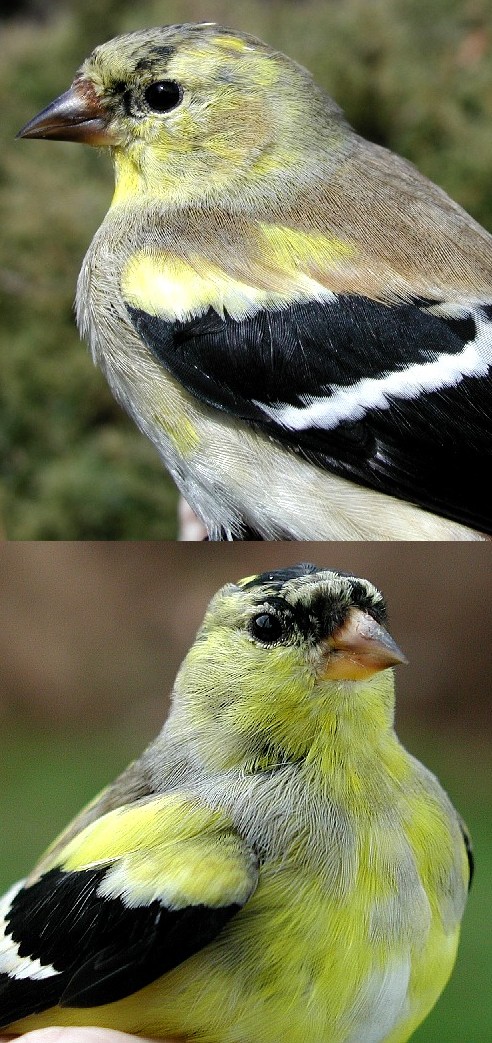
Powdermill Nature Reserve
Pictorial Highlights
March 2004
The spring banding season got off to a slow start with more "usual" winter birds than spring migrants being caught through the first week of March. Despite the arrival and capture of our first Red-winged Blackbird for the season on March 3rd at Powdermill, and our first Fox Sparrow on March 4th, we really didn't experience any true influx of migrants until March 6th, when we banded 13 new Song Sparrows. On March 14th we banded what probably was our last American Tree Sparrow of the season. With this species' departure, came more arrivals of Song and Fox Sparrows, giving us the opportunity to observe and photograph some interesting plumage variations among the Fox Sparrows, in particular.Fox Sparrows are divided into anywhere from three to twenty possible subspecies in the literature. At Powdermill, the bulk, if not all of the Fox Sparrows caught are Passerella iliaca iliaca, a subspecies placed in Pyle's (1997) "Northern Red Group." The extensive variation in plumage and bill color in this species puzzles us each and every season regarding its possible relationship to geographical variation. We have found no mention in the literature relating the color variations in the lower mandible that we've seen on birds captured here, to geographic variation. The photos below provide comparison head shots of two of our spring Fox Sparrows. The top bird with a yellow lower mandible and the bottom bird with a pinkish lower mandible. Note also that the overall color of the upper bird is a much brighter rufous than the reddish brown plumage of the bottom bird (which somewhat resembles a Song Sparrow; see below).

Overall, however, we found no
consistencies between plumage color and bill color this spring, leading
us to further question whether there is any significance of bill color
to geographical variation. Other possibilities include this being
seasonally variable, as in some cardueline finches (see goldfinch photos
below), or age or sex related. It may also simply be a case of individual
variation within this species, irrespective of subspecies.
We are, of course, very interested to here from anyone who may have any
insight on this interesting topic.

In the field, Song Sparrows are
probably the most similar looking bird to Fox Sparrows. While the
pictures here make them look clearly like each of its own, birds of more
Northern races, in particular, can be confusingly similar in both body
size and color. Distinguishing field marks for Song Sparrows are
their distinct eye and malar streak and heavy flank streaking. They
also have, proportionally, a much smaller head than Fox Sparrows.
On March 19th, we had our first of a few wintry storms which temporarily reminded us that while spring was officially only a day away (Spring Equinox on March 20th), winter had not completely let go of its hold on southwestern PA.

However, the Goldfinches continued to remind us that business for warmer weather was on their mind. This comparison photo is of two male goldfinches, the top one banded March 4th and the bottom banded March 31st. The progression of prealternate molt (the molt process which replaces winter or basic plumage with breeding or alternate plumage) is extremely variable in goldfinches. Of course, many of you, especially those with regular goldfinch visitors to your feeders, are familiar with the characteristic transition of males into the bright "gold" body plumage and black cap, but there is also another subtlety that occurs that may not be noticed as readily. The bill color changes from a dark dusky brown to orange.

We caught our first American Robin of the season on March 20th, a recapture from last spring, making it at least an after second year (ASY) bird. We banded our first Robin four days later on March 24th. The wing photo comparisons below are of the known ASY recaptured bird (top) and of the newly banded bird (bottom), also aged ASY.Just to make life more difficult for all of us banders out there trying to understand the use of molt and molt limits in ageing birds, at first glance, the top picture might appear to be that of a young, or second year (SY) bird. The greater coverts (the buffy tipped feathers in the middle of the wing) appear very worn, and the primary coverts and primaries (on the right side of the photo) appear very faded and brown. Especially when compared to the very fresh looking, clean, slate gray-black feathers on the bird in the bottom photo, this presents a very confusing impression of the bird's wing.
Upon closer inspection however, despite the worn appearance of the wing of the top bird, especially the primary flight feathers and associated primary coverts, there is no true molt limit. An SY American Robin would show a discernible break between fresher, molted feathers among the secondary coverts and retained, more worn and brown juvenal primary coverts; the known molt pattern for first year AMROs, however, does not give a molt limit between the secondaries and primaries as this bird appears to have.
This is a pretty striking and important example of how wear can affect appearance of feathers, even when all the wing feathers were replaced during the same molt. Thus, it is important for banders to treat each bird as an individual and only arrive at an age determination after all possible criteria have been taken into consideration and not jump to a conclusion based on first impressions.
Last Updated on 4/8/04
Finally, a few of our other banding highlights from March:
Our first Eastern Bluebird on March 10th (a beautiful SY male; note the retained juvenal outer greater covert);
This recaptured adult female Red-winged Blackbird, which was originally banded on April 6, 2002 as a probable after second year bird. The interesting thing about this bird is her unusually bright "red" wing epaulet (shoulder patch), which we just couldn't pass up the opportunity to show off once again. A picture of this same bird, with her unusually brightly colored shoulder, also appeared on our website in April 2002. Click here for her past pictorial highlight and for a discussion on variation in color of epaulets in Red-winged Blackbirds.